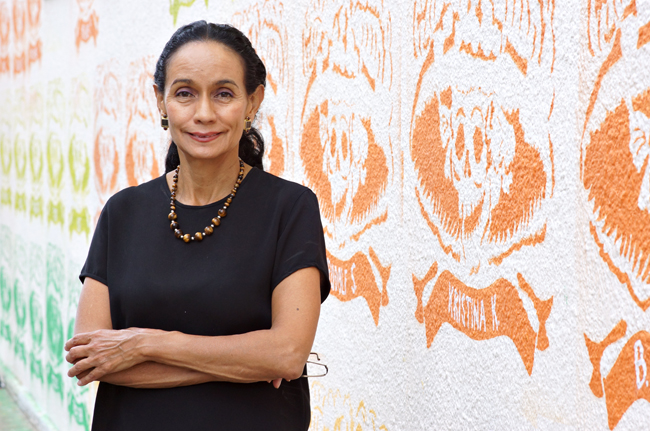In a one-story building huddled in the shadow of the Frost Bank Tower downtown is the Mexic-Arte Museum. The building is unassuming at first, but it contains years’ worth of history, and tales of the Latino people expressed through art.
The museum’s “Community Altars” exhibit, an annual installment that celebrates the Day of the Dead, is open at Mexic-Arte until Nov. 23.
Rebecca Gomez, the museum’s curator, works to ensure that the altars complement each other in the museum’s space.
“The altars are pieces of people’s lives as they come together to celebrate history,” Gomez said.
Whether accented by vibrant flowers and bright colors, or simply decorated with lace, the museum’s altars are as diverse as their subjects. Some are personal or specific memories carefully chosen by family members, and others are exhibits dedicated to mothers or to leaders in the Latino community.
No matter the subject, each altar is designed to be a celebration. This celebration is something Sylvia Orozco, executive director and co-founder of the museum and a UT alumna, witnessed over three decades ago when she travelled to Mexico and experienced the Day of the Dead for the first time.
“My friend Pio took me to Mixquic; it’s an Aztec community,” Orozco said. “It’s very beautiful because what I loved about it was that it was an interdisciplinary and multi-generational celebration. The smells, the food — you see children, you see older people, all the family celebrating. I kind of really fell in love with it. It’s very mystical, very beautiful [and] very spiritual.”
It was the spirit of this event that inspired Orozco to bring the feeling back to Mexic-Arte.
The museum was co-founded by Orozco and fellow UT alumnus Sam Coronado in 1984. The two met at UT and quickly became friends.
“I actually remember the moment we met,” Orozco said. “He was walking down the hall with a bunch of paintings, and I was walking down the hall with a box of paint, and there’s very few Latinos in the art department. so it’s kind of, like, when we see each other, we make friends.”
Coronado, who died last November, will be honored in the exhibit with an altar celebrating his life and work.
Orozco, who assisted in the design of Coronado’s altar, began to tear up as she described the items that comprised the altar.
“When we were putting together the altar, we wanted to make it something that was really reflective of him, and so, we thought of painting,” Orozco said. “He was always painting, [and] he was also a printmaker. Those were the instruments that he loved, and so, that is what we put in his altar.”
Gomez said that whether it’s through paintings, personal artifacts or even pieces of text intended to tell a story, the altars should remind viewers that while death is often mourned, it also signals a time to remember and celebrate the achievements and lives of those who have died.




















